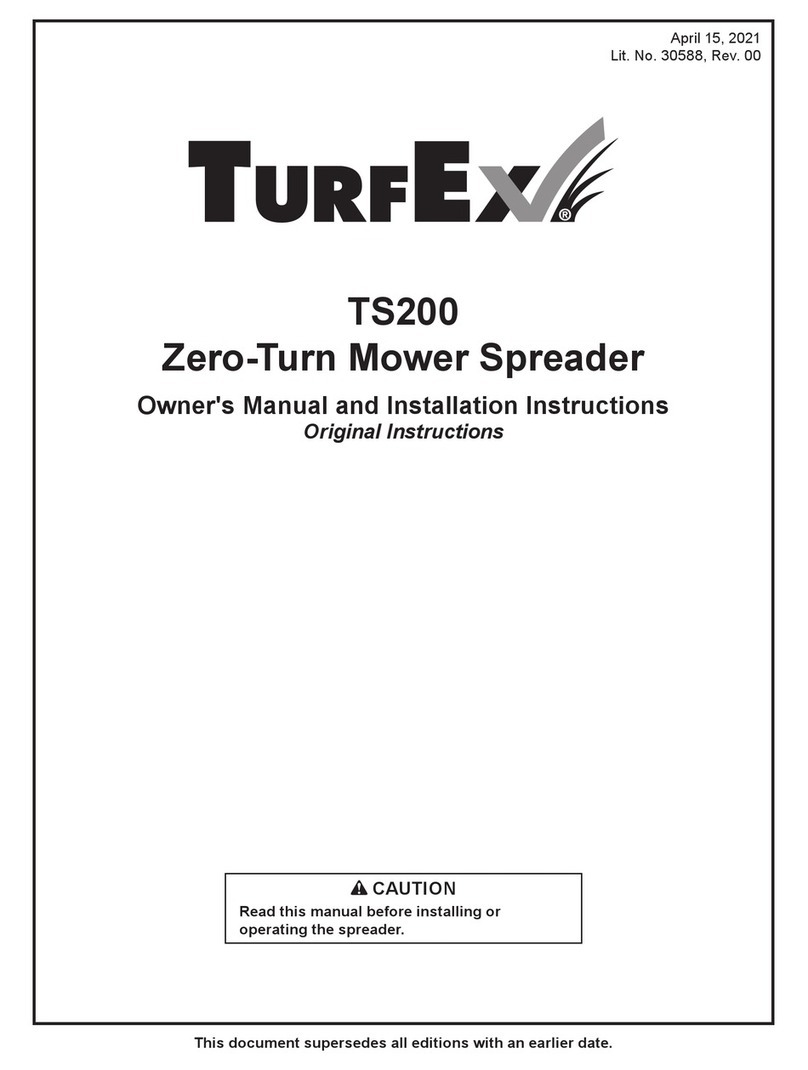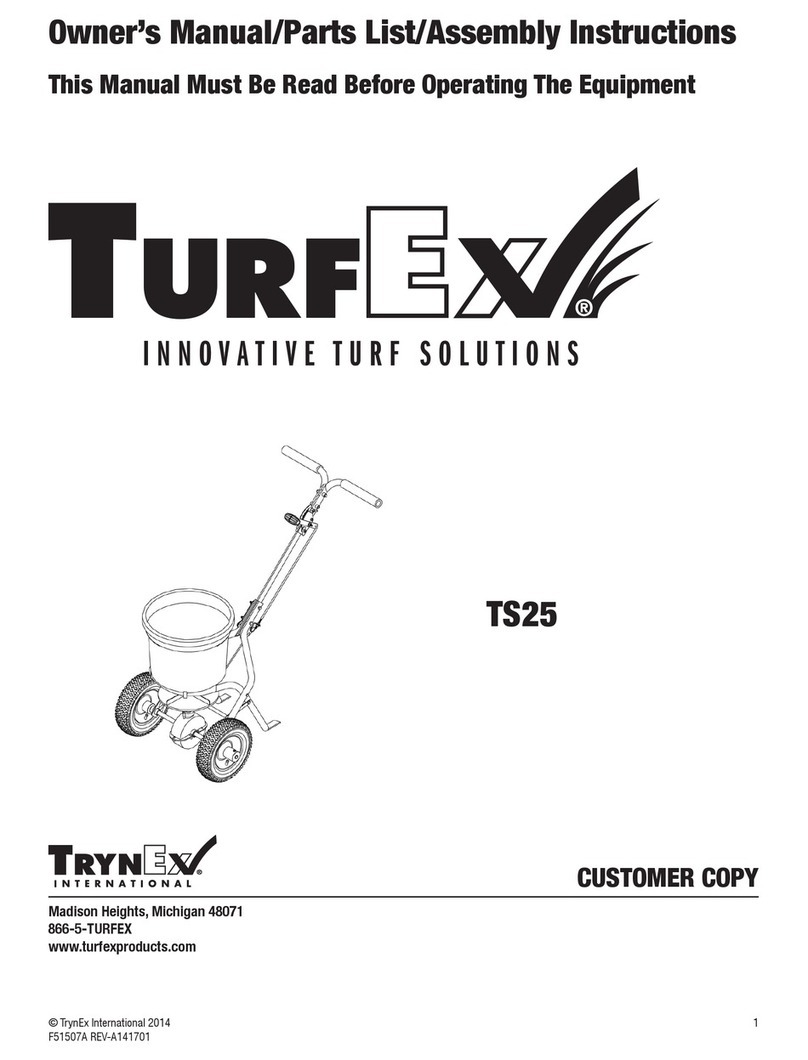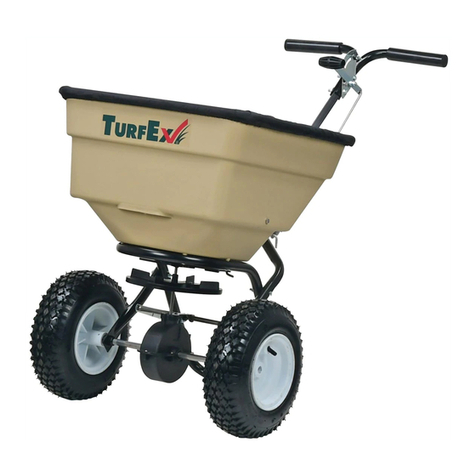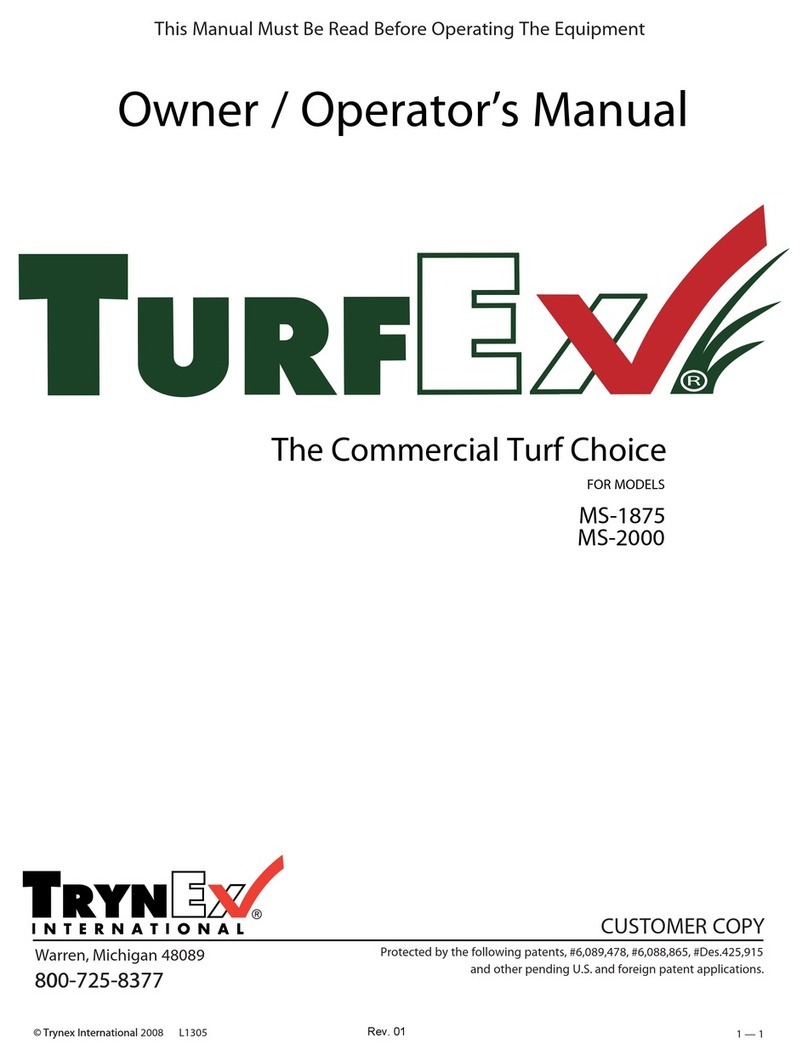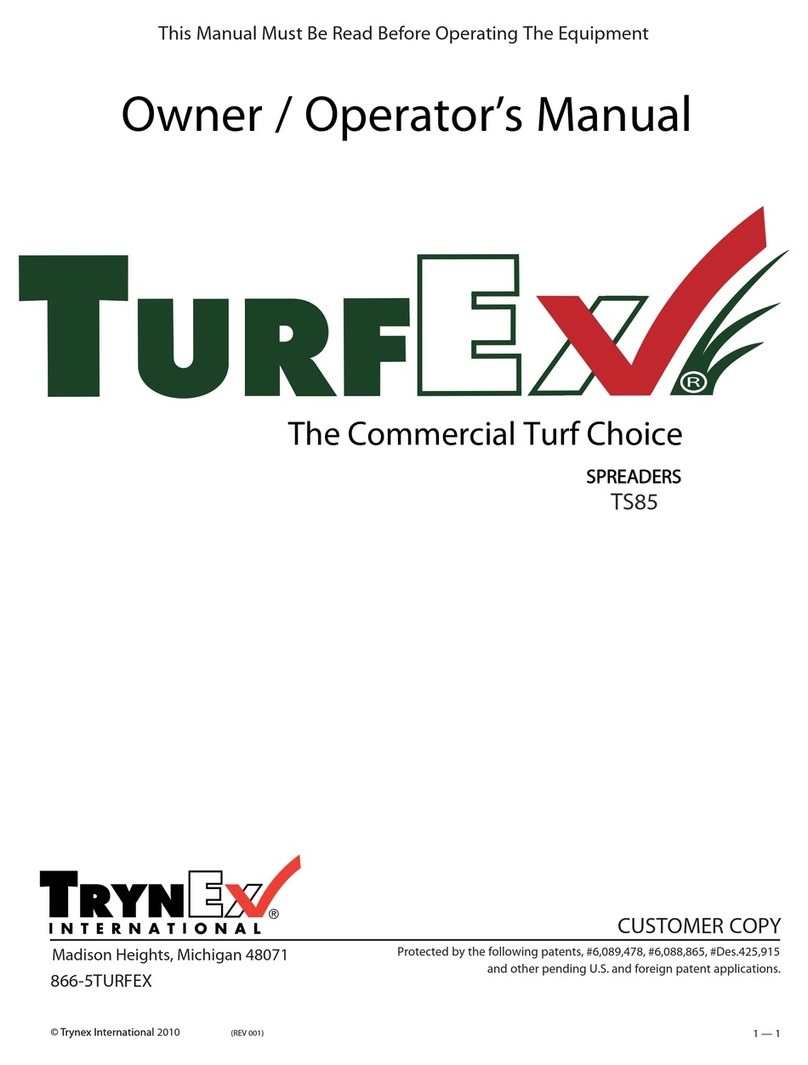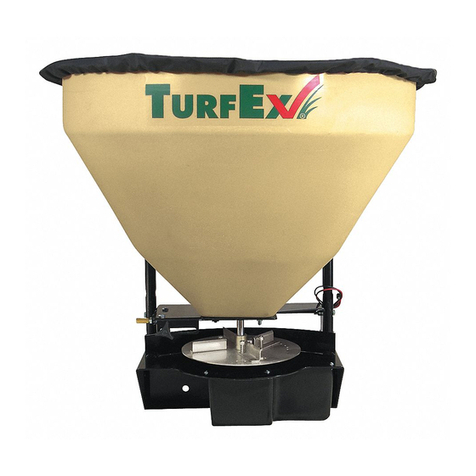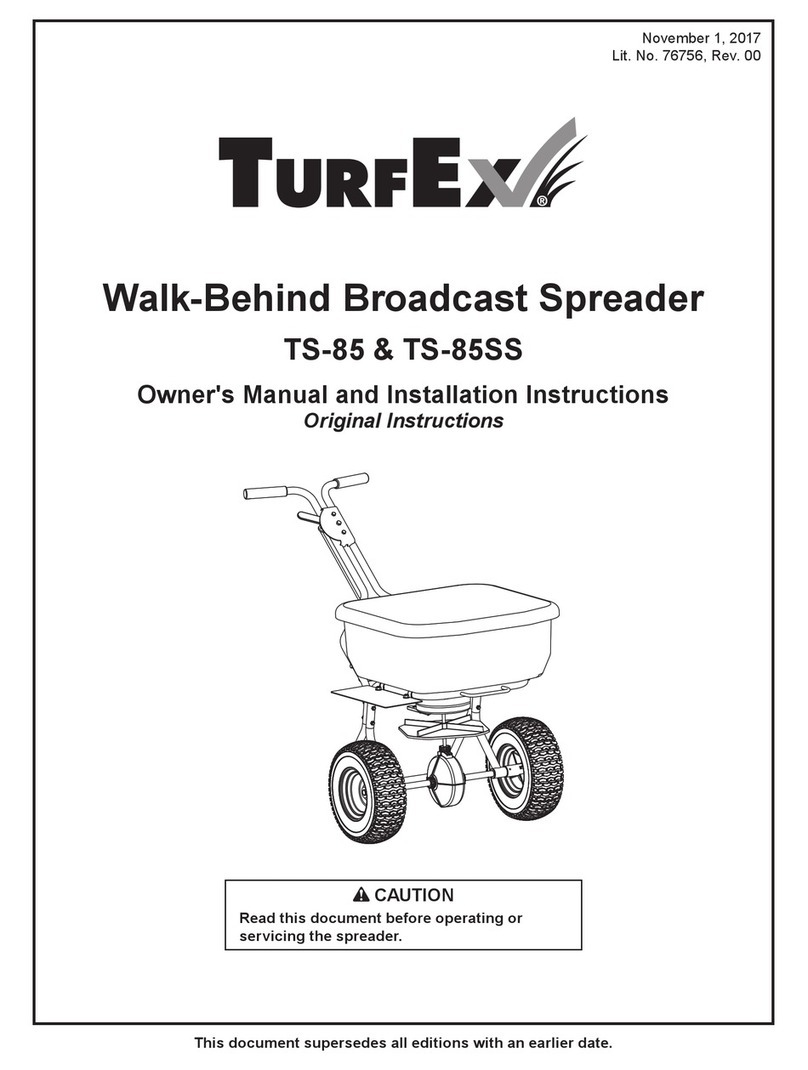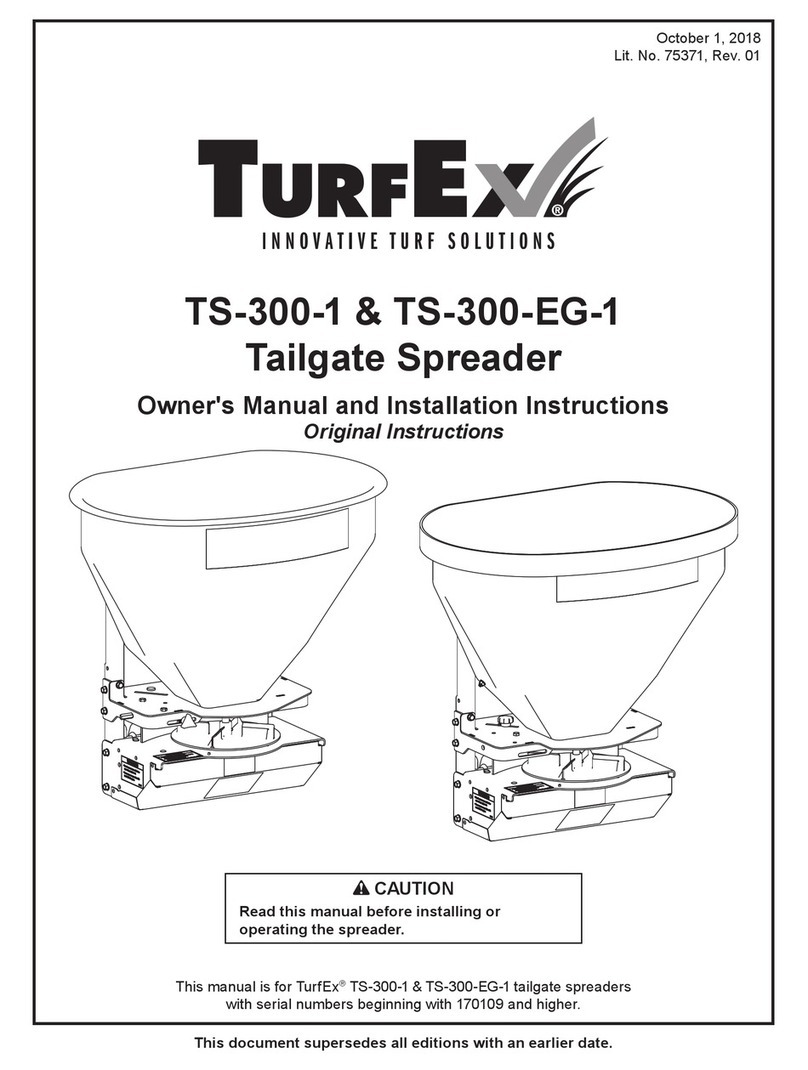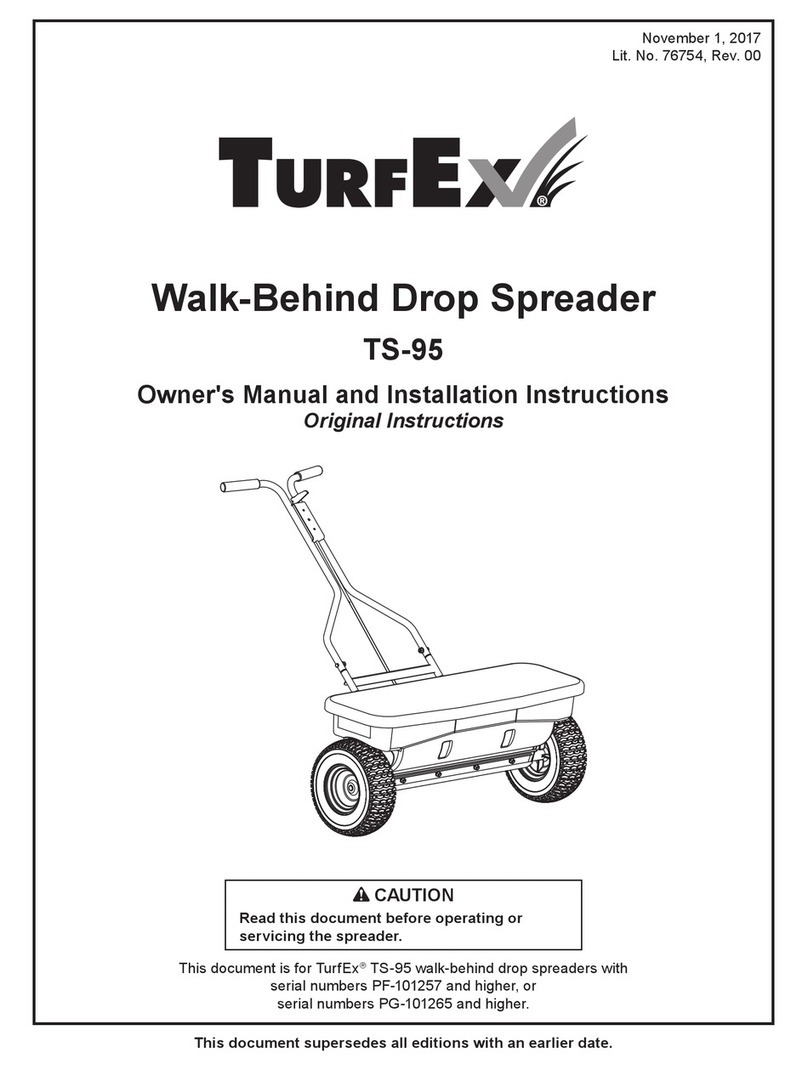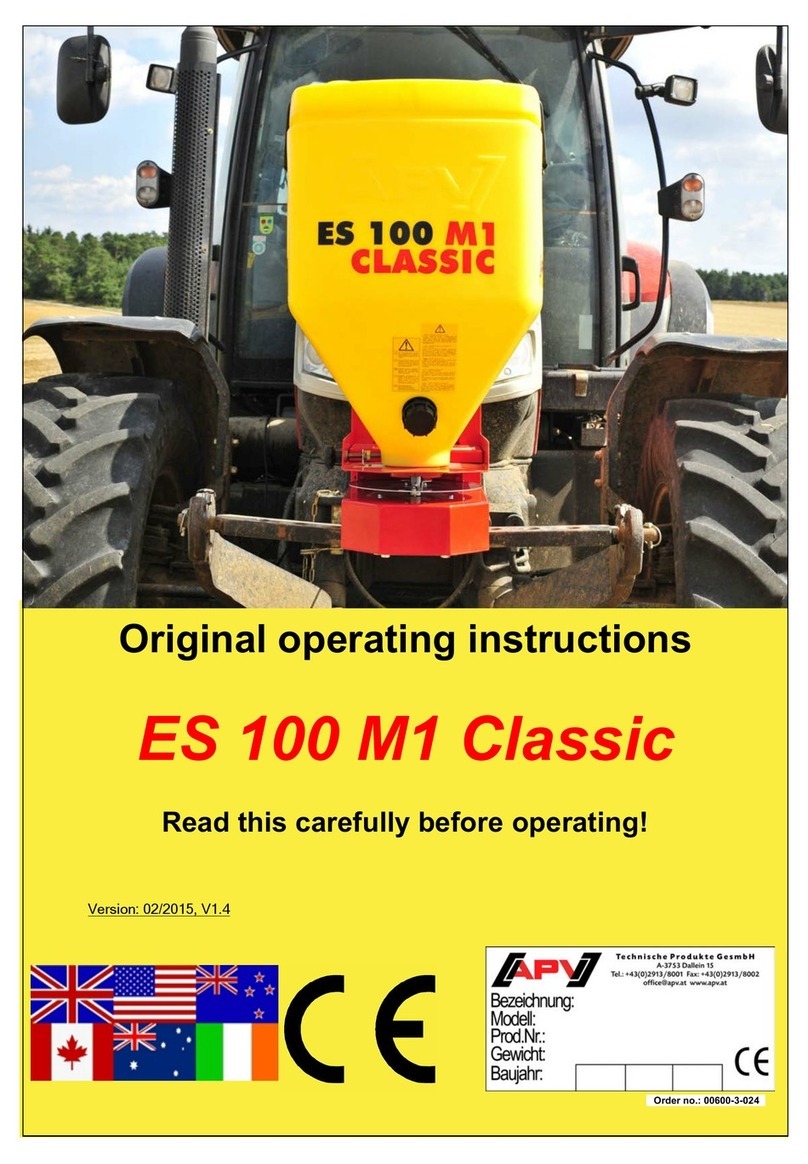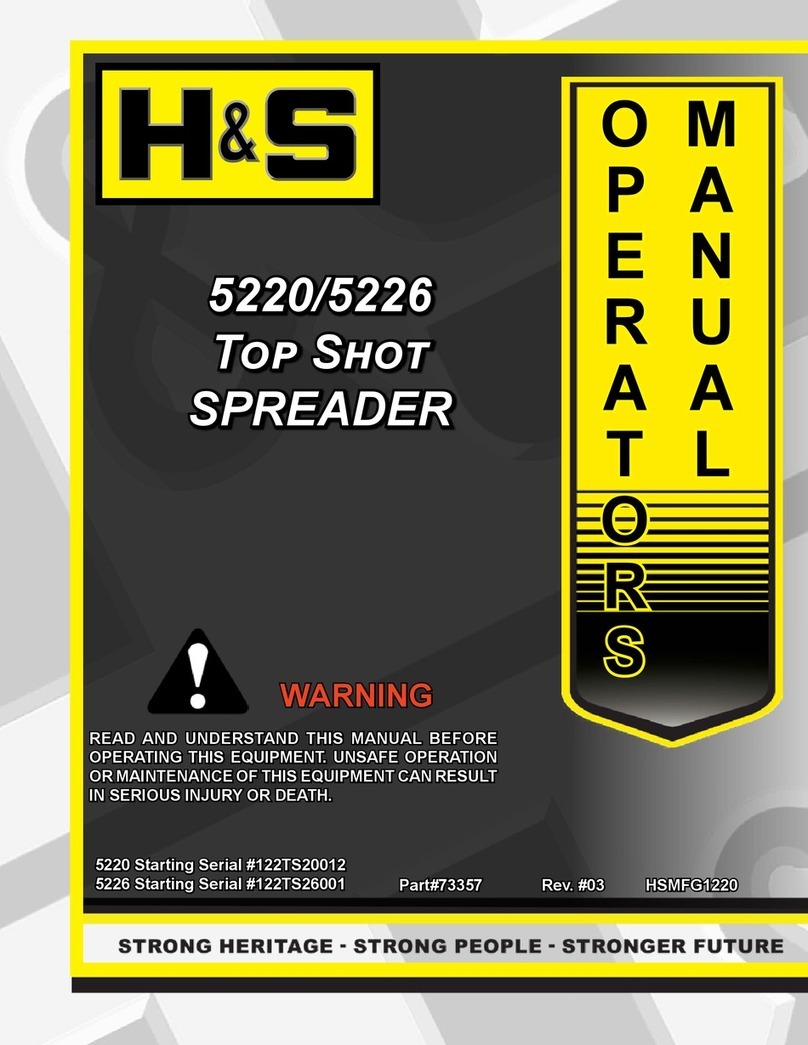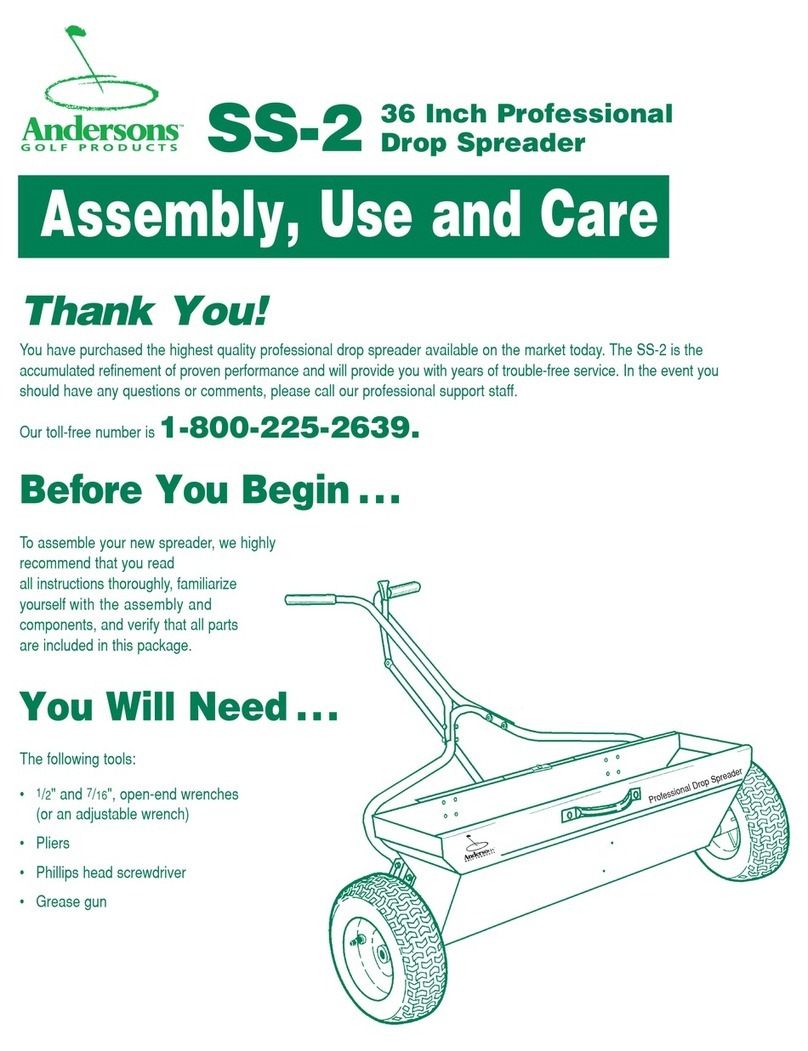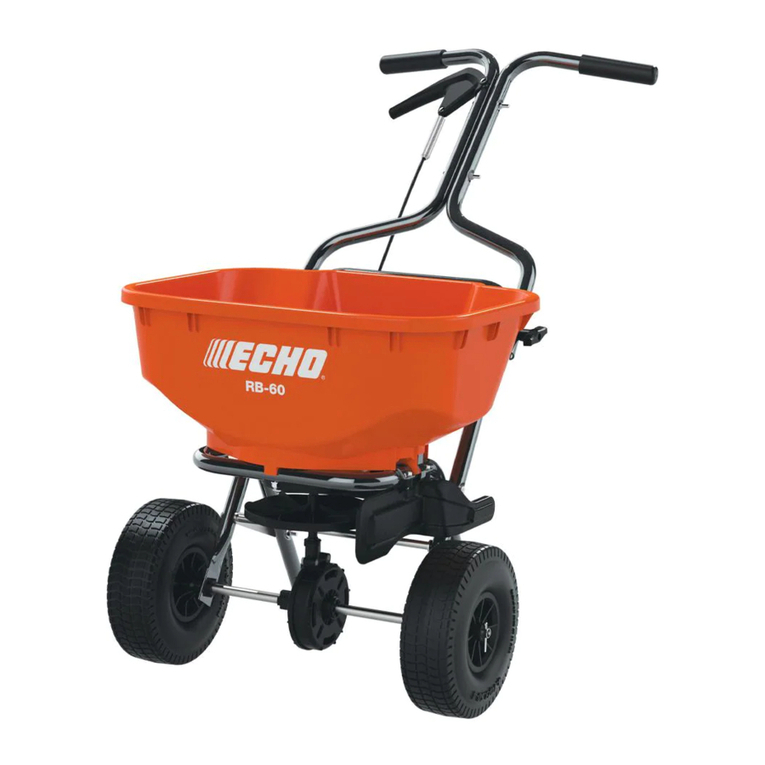
9
© Trynex International 2012
Safety
To avoid Loss-of-control, Tip-over, and Rollover
Loss-of-control, tip-over or rollover may cause death or serious injury. This machine has a high center of gravity and turf conditions affect
stability. Slopes are a major factor in loss-of-control, tip-over, and rollover accidents.
• Never shift gears while the machine is moving as this may cause a rapid slowdown or stop the front wheels causing loss-of -control or a forward tip over.
Instead, bring the machine to a complete stop before shifting gears.
• Study the terrain before beginning work and plan a safe operating pattern. If the area at issue will not accommodate a safe operating pattern, Do Not attempt
to drive the RS7200 in that area.
• Do Not operate on slopes or inclines where traction and stability are doubtful.
• Do Not ride on slopes exceeding 15 Degrees. Read Machine Safety Label and Safe, Balance Zone, sections for details on estimating 15 degree slopes before
starting or operating the RS7200.
• Never operate on wet slopes.
• Look for holes, ruts, rocks, and other hidden hazards in the work area before starting work. Uneven terrain can overturn the machine. Tall grass can hide
hazards.
• Do Not operate near drop-offs, ditches, or bodies of water.
• Keep a rm grip of the handlebars with both hands at all times.
• Slow down and lean into turns for better balance and to transfer your weight to the inside wheels to prevent loss-of-control, tip over, or rollover.
• Tires with excessively worn tire tread are dangerous on slopes or inclines. Replace tire(s) with less than 1/4” of tread remaining. Only use liquid lled tires
supplied by Turfex. Maintain tire pressure at 12 PSI. Higher pressures will cause the tires to lose traction and under inated tires will cause instability.
• Do Not attempt to climb over curbs and parking blocks while operating the RS7200 at a high speed as this may cause a forward tip-over.
• To help avoid Loss-of-control, tip over, and rollover, use extreme caution on inclines, and slopes and:
• Use 1st Gear to provide improved traction and a slower ground speed.
• Travel across the grade. Begin at the bottom of the slope and work your way up.
• Avoid traveling straight down a slope. When descending a slope, zigzag or slalom across the grade gradually downwards using the brakes to slow the
machine.
• Lean uphill at all times to provide better balance and to transfer weight to the uphill tires.
• Slow down and avoid sharp turns and sudden starts and stops.
• Reduce the amount of granular and liquid products carried.
• Apply rear brakes rst and then front brakes.
Operate the RS7200 as a walk-behind unit in situations where loss -of-control, tip-over, or rollover is possible.
When traveling up a slope, be aware that the drive tires have reduced traction and there is greater risk that the machine could tip backwards.
Recommendations for driving up an incline or slope:
• Lean forwards to provide better balance and to transfer more weight to the front drive wheels. Refer to the driver’s position illustrations in Driver’s Training
and Operation section of this Manual for details.
• Accelerate gently. Accelerate slowly. Accelerating too quickly may result in a loss of traction.
• Do Not make sharp or quick turns. Making sharp or quick turns may cause you to lose your balance and be thrown off the machine or cause a side rollover.
• In areas of poor traction, operate the machine as a walk behind unit.
• If you experience a loss of control while driving the machine on an upward slope, lower the handlebars as you step backwards off the operator’s platform and
apply the brakes. Once the brakes are applied, take corrective action.
• Backing down a slope is a hazardous maneuver which should be avoided. To avoid backing down a slope; stop the machine, apply the brakes, step off the
Driver’s platform, steer the front of the machine across the grade, and gradually engage the Throttle/Clutch. If backing down a slope is unavoidable (such as
when unloading the machine from a trailer), use extreme caution. Read Safety Manual Warning 13, Reverse Operation, for details on backing up.
When pointing downhill, the weight and traction is transferred to the front drive wheels. Avoid driving the machine at this angle as the machine
may tip over.
Recommendations for driving downhill:
• Lean backwards as you travel downhill to provide better balance for you and transfer more weight to the rear wheels. If necessary, extend your arms and
squat down backwards with arms extended to transfer more weight further to the rear.
• Do not change speed suddenly. Do Not accelerate. Decelerate gently by applying the rear brakes rst followed by the front brakes.
• Use extreme caution when turning. Do Not make sharp turns as you may lose your balance and/or be thrown from the machine or lose control. When making
turns, slow down and make gradual turns.
• Zigzag or slalom slowly and gradually downhill traveling across the grade using both brakes to slow your speed. The steeper the slope the more gradual the
slaloms should be between the switchbacks.
• Avoid any obstacles that could suddenly stop the front wheels causing a tip over.
• If you ever lose control while driving down a slope, let go of the handles and jump off to the rear, if necessary.
• Backing uphill is a risky maneuver which should be avoided. To avoid backing uphill; stop the machine, apply the brakes, step off the Driver’s platform, steer
the front of the machine across the grade, and gradually engage the Throttle. When backing uphill is unavoidable, use caution. Read Safety Manual Warning
“Reverse Operation”, for details on backing up.

